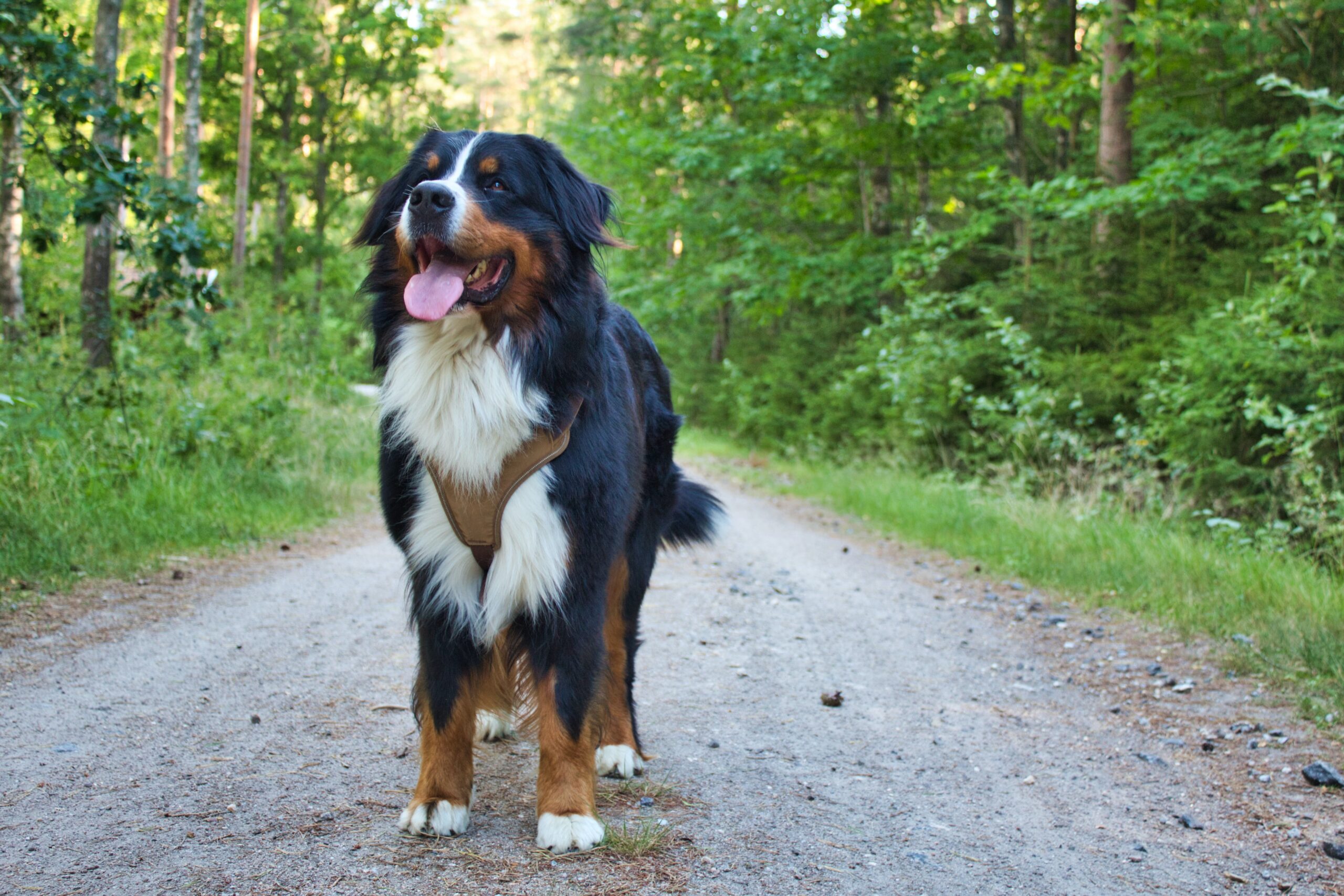Dog facts that wow: discover dog behavior, training tips, rare breeds, anatomy secrets, and record-breaking feats every curious dog owner should know.
From the incredible scent-tracking skills of search and rescue dogs to the myth-busting truth about whether dogs are color blind, this guide covers dog facts, all supported by experts. Understanding your dog’s body language, instincts, and unique traits can strengthen your bond.
Incredible Physical Abilities of Dogs
1. A Dog’s Nose Print Is as Unique as a Fingerprint
Just like human fingerprints, every dog’s nose print is unique. Kennel clubs and some rescue organizations use them for identification. The bumps and ridges on a dog’s nose — permanent from birth — make them a reliable biometric marker.
2. The Sense of Smell That Amazes Scientists
Dogs have an extraordinary sense of smell — up to 100,000 times stronger than ours. While humans have around 5 million scent receptors, a Bloodhound can have more than 300 million. This is why Bloodhounds excel in search and rescue missions.
3. Dogs Can Hear Four Times Farther Than Humans
Dogs can detect high-frequency sounds up to 65,000 Hz. Breeds like the Greyhound and Border Collie have heightened hearing sensitivity, allowing them to respond to subtle whistles during herding or hunting.
4. Dogs Are Not Truly Colorblind
It’s a myth that dogs see only in black and white. While their color vision is limited compared to humans, they can see shades of blue and yellow. Toys in these colors often stand out most.
5. Wet Noses Serve a Purpose
A dog’s wet nose helps capture scent particles, enhancing smell. Dogs often lick their noses to keep them moist, which boosts scent detection ability.
6. Dogs Can Be Left-Pawed or Right-Pawed
Like humans being right- or left-handed, dogs often show paw preference. Watch which paw they use first when reaching for a toy to find out.
Surprising Dog Behaviors Explained
7. What Tail Wagging Means
Not every tail wag means happiness. A slow, stiff wag can indicate caution, while a fast, loose wag signals excitement. Some dog breeds naturally wag less than others, such as the Chow Chow compared to a Golden Retriever.
8. Dogs Understand Human Emotions

Dogs can interpret tone of voice, facial expressions, and body posture. Studies show they can distinguish between happy and angry expressions and adjust their behavior accordingly.
9. Some Breeds “Smile”
Golden Retrievers and Samoyeds often display a relaxed, open-mouth look resembling a smile, usually signaling contentment.
10. Why Dogs Pant
Panting helps dogs regulate body temperature since they can’t sweat over their entire body. Sweat glands in paw pads alone aren’t enough for cooling.
11. Licking Noses and Other Communication Cues
Dogs lick their noses to clean them, enhance smell, and sometimes signal submission to other dogs. Understanding these dog communication facts helps owners respond appropriately to their pet’s signals.
Dog Training and Communication
Training is more than teaching tricks — it’s about building a shared language. Using positive reinforcement, consistency, and clear cues improves obedience and trust. Basic dog training skills can prevent problems, enhance safety, and deepen your relationship.
Reading dog behavior facts and communication signals — like ear position, tail movement, and vocalizations — is essential for successful training and stronger bonds.
Historical and Breed-Specific Dog Facts

- Newfoundlands were bred for water rescue. Their webbed paws and strong swimming ability make them natural guard dogs.
- Basenjis are known as “barkless dogs” and produce a yodel-like sound instead of barking.
- Dalmatians are born pure white, developing their famous spots within weeks.
- Chow Chows and Shar-Pei dogs have rare blue-black tongues.
- Salukis are the oldest dog breed still in existence, with history dating back over 4,000 years.
- Greyhounds are the fastest dogs, reaching up to 45 mph.
- Bloodhounds have such reliable scent-tracking ability that their results have been accepted as legal evidence.
Essential Health Facts
12. Chocolate is Dangerous
Chocolate contains theobromine, which dogs can’t process well. Even small amounts can cause health issues.
13. Dogs Have Three Eyelids
Besides the upper and lower eyelid, dogs have a third called the nictitating membrane, which protects and lubricates the eye.
14. Obesity is Preventable
Obesity is one of the most common canine health issues. A balanced diet and regular exercise are essential.
15. Dogs in Rescue Work
Many breeds, from Labrador Retrievers to German Shepherds, serve as search and rescue dogs. They undergo specialized dog training in scent work, endurance, and obedience to locate missing persons and assist in disasters.
16. Territorial Instincts
Dogs naturally mark and defend territory. Training can help manage overprotective behavior.
Top 10 Amazing Dog Records
- Tallest Dog – Great Dane “Zeus” at 44 inches tall.
- Smallest Dog – Chihuahua “Milly” at just 3.8 inches high.
- Fastest Breed – Greyhounds, reaching 45 mph.
- Longest Ears – Bloodhound “Tigger” with ears over 13 inches long.
- Oldest Recorded Dog – Australian Cattle Dog “Bluey” lived 29 years and 5 months.
- Best Swimmer – Newfoundlands excel at water rescue.
- Most Tennis Balls Held – Golden Retriever “Augie” with five in his mouth.
- Largest Litter – 24 puppies from a Neapolitan Mastiff in 2004.
- Most Expensive Breed – Tibetan Mastiffs can sell for over $1 million.
- Best Scent Tracker – The Bloodhound remains unmatched.
Dog Myth Busters
Myth: Dogs are completely colorblind.
Truth: They see blue and yellow tones.
Myth: A dry nose means illness.
Truth: Nose moisture changes daily and isn’t a reliable health sign.
Myth: All dogs love swimming.
Truth: Bulldogs often struggle in water, while Newfoundlands are natural swimmers.
Quick Dog Facts
- Sense of smell: Up to 100,000× stronger than humans.
- Unique ID: Nose prints.
- Hearing: Up to 65,000 Hz.
- Colors: Blue and yellow vision.
- Average lifespan: 10–13 years.
- Sweat glands: Paw pads.
- Special traits: Paw preference, third eyelid.
Conclusion
Dogs are remarkable — with physical skills, emotional intelligence, and breed-specific traits that make them endlessly fascinating. Whether learning dog facts or better dog training, every owner benefits from understanding these details.
💬 Which dog fact surprised you most? Share it in the comments and spread the love by sharing this post with fellow dog lovers!
FAQs
Why do dogs eat poop?
Coprophagia, the act of eating feces, can happen for several reasons, including curiosity (especially in puppies), boredom, hunger, or nutritional deficiencies. For mother dogs, it is often an instinctual behavior for hygiene.
Why do dogs yawn?
Yawning in dogs can mean tiredness, but it’s also a common calming signal — a way to diffuse stress or tension. Dogs may yawn when meeting new people, during training, or when sensing conflict, as a form of social communication.
Do dogs see in color?
Yes, but not like humans. Dogs are dichromatic, meaning they primarily see in shades of blue and yellow, but reds and greens appear muted.




